#algonquian
Explore tagged Tumblr posts
Text
This person has a more expansive definition of plagiarism than me, and I think some of the translation problems likely are more of a problem in their specific domains. But the points about re-wording the sources to be less accurate and just incorrectly citing sources altogether (using them as references for things those sources don't even say!!) seem likely to affect Wikipedia in general. I've certainly notice plenty of poorly written, confusing sentences on Wikipedia just in my casual browsing.
And the "cascading errors" -- arising from multiple editors trying "improve" articles without checking the sources, thus making the Wikipedia article *more* incorrect -- seems like an intrinsic property of how wikipedia works.
#wikipedia#linguistics#algonquian#hebrew#history#i will say... not in WP's defense exactly... but *most* English language sources on hebrew have bad & confusing transliteration#what i see as the problem here is Wikipedia's more technical vocabulary and notation makes it *look* scholarly and reliable#and apparently it isn't
328 notes
·
View notes
Text
I have written an academic-style paper on the speculative etymology of 'Miskatonic,' an iconic name from the Cthulhu Mythos! It contains language construction, worldbuilding, and an exploration of Algonquian languages. For any language nerds out there, or anyone interested in the Cthulhu Mythos, please check it out! And, if you enjoyed, please tell me what you think in the comments!
https://archiveofourown.org/works/64195174?view_full_work=true
#miskatonic#cthulhu mythos#h p lovecraft#linguistics#language#conlang#constructed language#worldbuilding#algonquian#abenaki#first nations languages#meta#writing#my writing
36 notes
·
View notes
Text
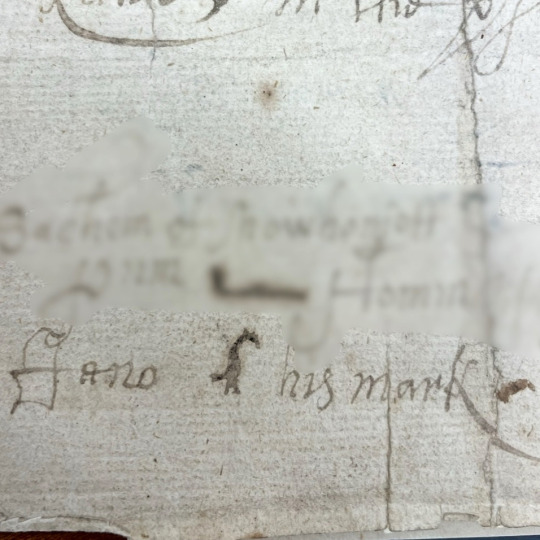
Jano his mark.
Narragansett. A signatory here on a deed also signed by Miantonomo, Pumham and Totanoman (all marks we have shared previously).
The deed describes “one parcel of lands…lyinge uppon the west syde of that part of the sea called Sowhanes Bay, from Copassanatuxett, over against a little island in the sayd bay, being the north bounds, and the outmost point that neck of land called Shawhomet.” This area is now referred to as “Warwick, Rhode Island.”
Signed January 12, 1642. Seen at the John Carter Brown Library.
#jano#narragansett#miantonomo#pomham#totanoman#hismark#theirmarks#easternwoodlands#nativehistory#sachem#17thcentury#rhodeisland#johncarterbrownlibrary#warwickri#algonquian#shawomet
20 notes
·
View notes
Text
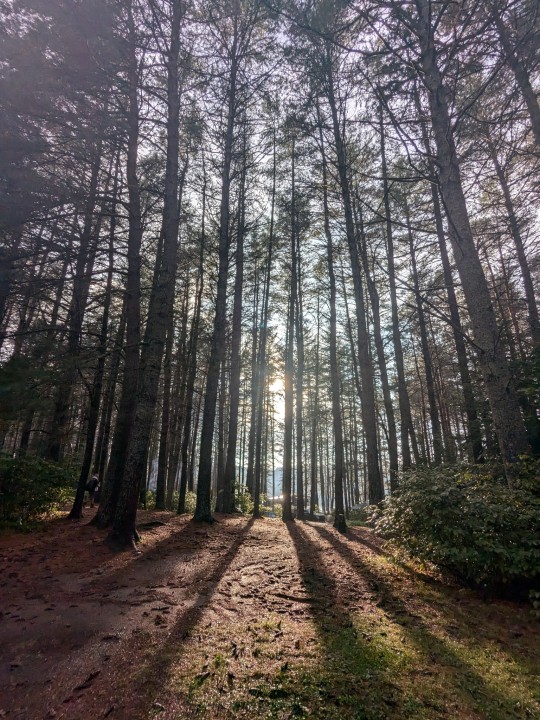
#landscape#photography#trees#forest#sunset#nature#leaves#pretty#wow#park#ontario parks#algonquin park#algonquian
19 notes
·
View notes
Text
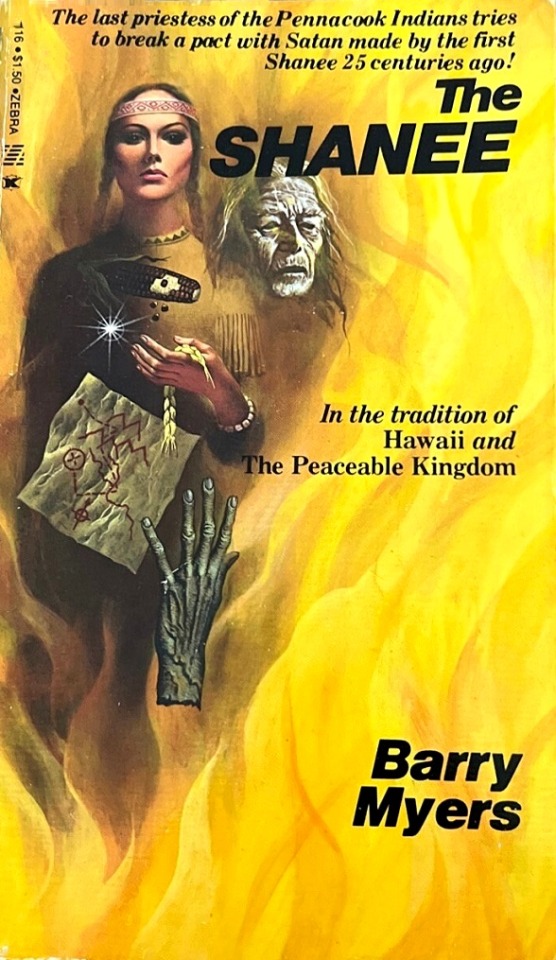
Barry Myers - The Shanee - Zebra - 1975
#witches#shamen#occult#vintage#zebra books#barry myers#zebra#the shanee#pennacook#pennacook indians#indians#in the tradition of#1975#pact#algonquian#shanee
22 notes
·
View notes
Text
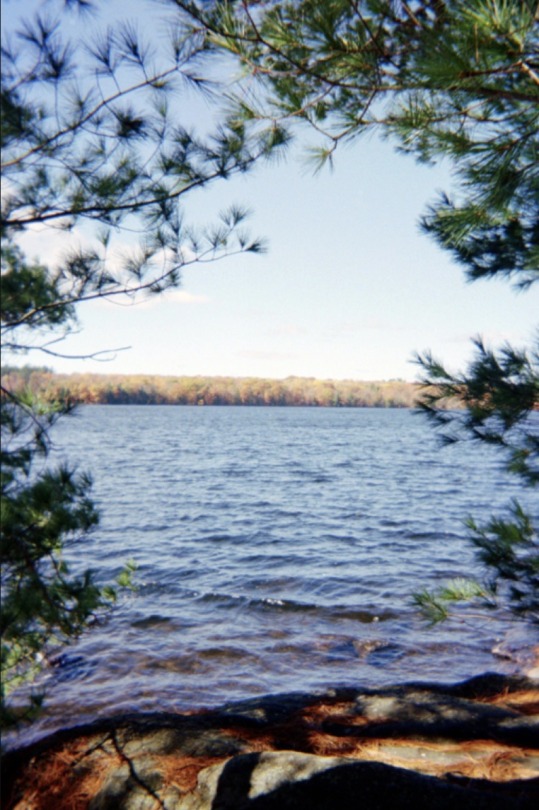
12 notes
·
View notes
Text

Portrait of Stu-mick-o-sucks (Buffalo Bull's Back Fat, Head Chief of the Kainai Nation) (1832) by George Catlin (1796–1872). Smithsonian American Art Museum.
#george catlin#19th century art#male portrait#smithsonian#native american#canada#first nations#american art#american painter#1832#1830s#1830s art#19th century#native#kainai#alberta#blackfoot#blackfoot confederation#indigenous#indigenous peoples#native americans#indigenous rights#land back#canadian#smithsonian art museum#smithsonian museum#algonquian#portrait#portraiture#canadian history
19 notes
·
View notes
Text

Mishipeshu, the dark beast of the depths. Within the lakes and seas lies this great creature, a beast of darkness that engulfs those who incur its wrath. From Lake Superior the Mishipeshu commands the horned serpents, their numbers being the legions of chaos. The Mishipeshu and their horned serpents are opposed by their eternal enemies, the thunderbirds lead by Nanabozho. Locked in an endless conflict, each time the Mishipeshu’s forces rose up from their watery abyss to strike against the earth they were driven back by the storms of the thunderbirds. The Mishipeshu first encountered his nemesis Nanabozho during the previous world. The Mishipeshu had captured and dragged Nanabozho’s brother Jiibayaabooz into the depths of a lake. Nanabozho forced the Mishipeshu out of the lake and fought the beast, with a decisive strike Nanabozho injured the Mishipeshu. Enraged, the Mishipeshu roared and tore Jiibayabooz asunder, from this roar the waters rose and flooded the earth, covering the land in its dark abyss. Described as a giant panther-like beast, the Mishipeshu’s form is distinctly recognizable, long spikes or fins traveling down its spine, two horns sprouting from its head, and glittering scales of copper. Those brave enough to dive into the Mishipeshu’s abode can find the Mishipeshu’s flaked off copper scales, though these scales may bring fortune and luck they can also bring negativity and anger the Mishipeshu. The Mishipeshu bestows its wrath on those who merely travel across its domain, drowning them with whirlpools and luring those in with transformed beauty.
The Mishipeshu was a legendary creature among many of the Native Americans and First Nation cultures around the Great Lakes region, notably the Anishinaabe peoples. Mishipeshu translates to “the great lynx” however other renditions go by “the underwater panther” as well. The beast’s title of Gitche-anahmi-bezheu translates to “fabulous night panther” but it more directly translates to “great underwater wildcat”. Some cultures hold the copper they find underwater in high regard, depicting them as bringers of good fortune. This is directly seen in a story told by a trader who haggled with a native villager to take their deposit of copper. Despite the villager being clearly uncomfortable with the transaction they eventually relented and agreed to the transaction, later during the actual trade the villager felt extreme regret and embarrassment for accepting the trader’s bargain, noting that it was the worst decision of his life and asked the trader to promise that he’d never tell others about the transaction, a promise the trader didn’t keep. typically seen as the leader and strongest of the monsters of the underworld, The Mishipeshu is sometimes referred to as a species of creatures rather than a singular beast, though this role is typically taken by the horned serpents. The Mishipeshu is also said to take the form of a horned serpent as well, the two forms are generally interchangeable for the Mishipeshu but not the horned serpents themselves. The myth of the Mishipeshu’s fight against Nanabozho is considered to be apart of the flood archetype, among the likes of the story of Noah and the Mesopotamian flood myth. The Mishipeshu is also a deceptively close rendition of the Chaoskampf motif, likening it to the Canaanite Yam, the Babylonian Tiamat and Abzu, and the Irish Balor among many others. However this doesn’t mean that the Mishipeshu is directly descended from such myths, only that it fits the archetype. The Mishipeshu is an extremely old figure, being dated to the prehistoric period of the Americas, with enormous amount of pictographs and textiles depicting the creature.
#art#character design#mythology#deity#creature design#mishipeshu#underwater panther#religion#native american mythology#anishinaabe mythology#algonquian#ojibwe#water god#monster god#monster#race#chaos god#demon#underworld god#animal god#indigenous
9 notes
·
View notes
Text

The moccasin is wearable history that has always remained in style regardless of the climate!
❄️💜☀️
#history#moccasins#native americans#powhatan#shoes#fashion history#canada#united states#algonquian#1600s#native american history#1700s#indigenous peoples#historic fashion#coquette#native american culture#american history#cottage core#indigenous americans#colonial america#traditional fashion#quebec#canadian history#nickys facts
13 notes
·
View notes
Text
bisexual lighting ✨️
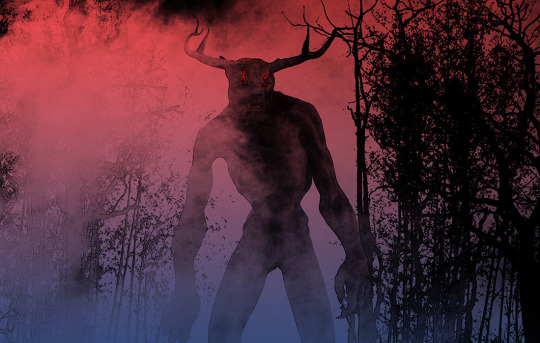
#wendigo#windigo#windigoag#indigenous folklore#algonquian folklore#algonquian#wiindigoo#bisexual#bisexual pride#bisexual lighting#wendigo bi icon confirmed#💗💜💙#pride#pride month#happy pride month from your favourite north american flesh eating supernatural beings 🏳️🌈
7 notes
·
View notes
Text
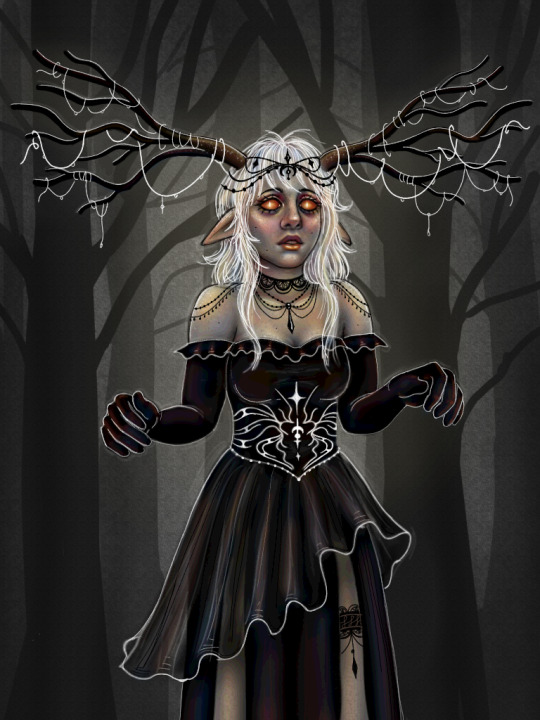
Here's a woodland creature inspired by a Wendigo!💫
Wendigo is is a malevolent, cannibalistic, supernatural originating from Algonquian folklore, strongly associated with winter, coldness and starvation.
It's seen as the embodiment of gluttony, greed, and excess: never satisfied after killing and consuming one person, they are constantly searching for new victims.
Searching for information I also found out that in modern psychiatry, there's a disorder known as "Wendigo psychosis" that is characterized by symptoms such as an intense craving for human flesh and fear of becoming a cannibal!
Ig || kofi || tiktok
#wendigo#wendigo art#folklore creature#folklore#algonquian#algonquin#native american#native american folklore#goth#goth aesthetic#goth style#goth dress#goth art#woodland#art#artists on tumblr#procreate#digital art#digital illustration#drawing#artist support#digital portrait#portrait#ibispaintx#ibispaint art#made in ibis paint
5 notes
·
View notes
Text
Bigfoot or Wendigo?
Both Bigfoot and the Wendigo are interesting paranormal creatures of folklore that are mentioned in legend. Each of these monsters has a unique history, set of attributes, and cultural significance. While this is true, there are also some fascinating parallels between them. There is a connection between the Wendigo and the indigenous cultures of the Algonquian tribes that lived in North America. It is frequently portrayed as an evil ghost that is linked to harsh conditions like starvation, cold, and cannibalism. A gaunt, emaciated figure with glowing eyes and a heart of ice is what the Wendigo is said to be like after being described. According to mythology, it is a symbol of unquenchable greed, as well as the taboo of cannibalism itself. Especially in harsh winter conditions, when resources are few, this creature acts as a warning against the perils of unrestrained impulses and the collapse of social taboos. This is especially important to keep in mind during this time of year.
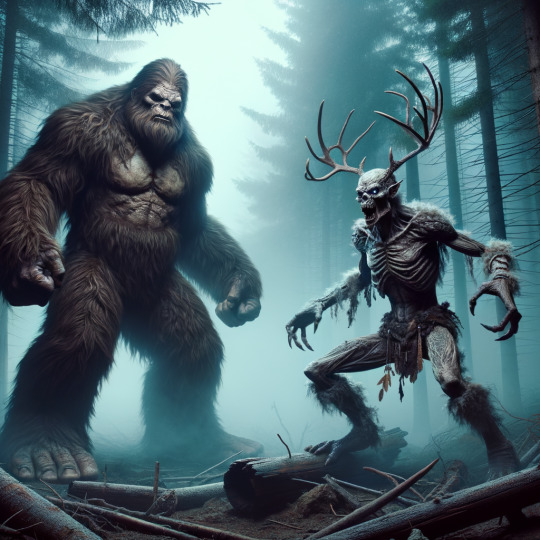
On the other hand, Bigfoot (or Sasquatch), is a creature that appeared in North American legend and was primarily discovered in the Pacific Northwest. A big, ape-like monster that is covered in hair and resembles a giant bipedal primate is the definition that is most commonly used to characterize Bigfoot. In contrast to the Wendigo, Bigfoot does not possess an innate malevolence. The Bigfoot is frequently portrayed as a timid and solitary being who avoids interacting with humans, according to sightings and folklore. Bigfoot has become a symbol of mystery, representing the unknown aspects of nature and the possibility of species that have not yet been discovered. Both of these creatures have a way of connecting with the natural world. Bigfoot, on the other hand, is associated with the vast, unexplored forests of the Pacific Northwest, whereas the Wendigo is typically associated with the barren and icy forests of Canada and the Northern United States. The dread and fascination with the wild and untamed features of nature are both brought to mind by both of these experiences. Their narratives are illustrative of the human propensity to attribute supernatural elements to natural happenings that cannot be explained by scientific phenomena. Another similarity is that they both serve as emblems of their own cultures. There are a number of themes that are embodied in the Wendigo, including the repercussions of avarice, the disintegration of societal norms, and loneliness. On the other hand, Bigfoot is a symbol of the enigmas that exist in the natural world and the attraction that lies within the unknown. Both have expanded beyond their initial cultural contexts to catch the imagination of a wider audience, which has resulted in the creation of a multitude of stories, films, and even hoaxes.
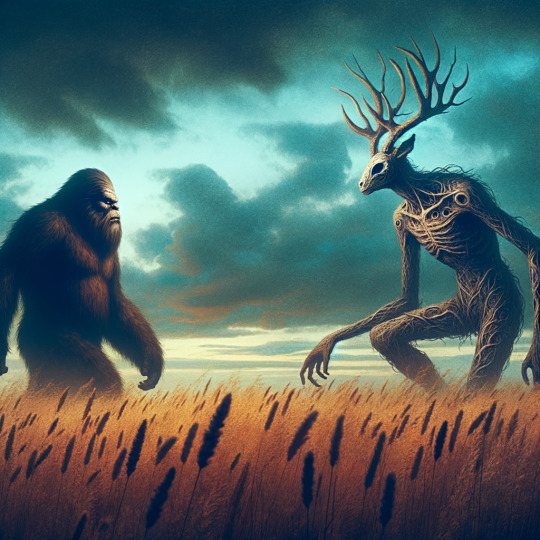
The cultural influence and perception of the creatures are very different from one another, despite certain commonalities between them. The Tale of the Wendigo, a moral cautionary tale, is strongly rooted in particular cultural ideas and acts as a representation of those views. Bigfoot, on the other hand, has become ingrained in popular culture and is frequently regarded more as a topic dedicated to cryptozoology and amusement than as a monster that carries significant ethical repercussions. In a nutshell, the Wendigo and Bigfoot are two distinguishable monsters, each with their own different history and interpretations. Although both are related to the woods and serve as cultural symbols, the roles that they play and the ways in which they are portrayed in folklore are very different from one another. Bigfoot is a symbol of the secrets and wonders of the natural world, but the Wendigo is a figure that serves as a cautionary tale, illustrating the perils of living an excessive lifestyle and a moral decline. Through their combined efforts, they shed light on the everlasting attraction that people have with the supernatural and the unknown.
#wendigo#bigfoot#sasquatch#north american cryptid#cryptids#cryptozoology#cryptid#bigfoot art#native american folklore#algonquian
5 notes
·
View notes
Text



Sachemus his mark
Presumably Wampanoag. Unfortunately, the top left portion of this land transfer document, and therefore much of the text, is missing from the Newberry Library’s copy. Another deed (also a later copy of an original) signed on the same date, complete but with different wording (so perhaps another land transfer facilitated by the same people on the same day) is part of the collection of the Sturgis Library (third slide). The Sturgis deed identifies Sachemus as the “Sachem of Satuckett” [sic] and the pictograph mark is the same. Here, Satuckett or Satucket is suggested to be the place now commonly referred to as “Dennis, Massachusetts.” Both signed December 3, 1663.
A copy of the original (first and second slides), seen at the Newberry Library.
#sachemus#wampanoag#massachusetts#hismark#theirmarks#newberrylibrary#easternwoodlands#nativehistory#nativenewengland#17c#algonquian#dennismass#barnstablecounty
3 notes
·
View notes
Note
What's it like to learn anishinaabemowin?
it is a lifelong process. i am still only at the very beginning of that journey myself. i can introduce myself, where i'm from, recognize plants and animals and colours, but i am nowhere near fluency; i can barely string sentences together. the way it is interwoven with our belief systems and our land is beautiful, but it is also what makes it very complex to understand at the very start. to try and learn when it isn't something that i really grew up hearing is strange, because is it built very differently from english and french. everything is connected, and there are several layers of understanding because words are usually made up of other words, kind of in the way german does? i am not sure if you're just curious or thinking about learning yourself, but if it's the latter, immersion is definitely key. taking non-language indig classes, working the land, spending time with elders... everything that i've learned of the language has been in that way, the way that it's always been done in our communities. it feels very unnatural to do in a classroom when you could be outside showing me the plant when you say it's name, you know? it's hard. i stick with it because it's important to me to honour my culture and my ancestors in that way, but also because i genuinely just think it's very cool and interesting. i like being able to make connections when i pick up little fragments of the language. it's like an auditory puzzle.
#indigenous#anishinaabe#algonquin#algonquian#métis#mixed#native#indigenous heritage#anishinaabemowin#ndn#indigenous art#indigenous stories#language revitalization#language#langblr#indigenous languages#linguistics
13 notes
·
View notes
Text
Introduction:
Haigh, is mise Éamon! Tá mé trí bhliain is fiche d'aois agus tá mé i mo chónaí ar chósta thoir Turtle Island. I'm transmasc non-binary and gay, and my pronouns are they/he. My lovely partner is @palegreenthing . Tá mé ag foghlaim Gaeilge:)
I'm a Linguistics major in my third year of college. I've studied Russian, Korean, and Irish, but my current focus is Korean and Irish. Being of partial Irish descent, learning Irish is a part of my reconnecting journey. I'd love to have friends to practice Gaeilge with- so please don't hesitate to reach out to me!! I'm also interested in Irish history and mythology etc etc. Literally just Ireland in general! I've been to Ireland once for my 21st birthday and plan on visiting many many many more times. I'd also love friends to study Korean with.
While I don't attend protests nearly as frequently nowadays, I used to be active in protests in the DMV area. As someone who is mixed-Indigenous, I primarily attended protests relating to Indigenous rights and issues. I also attended protests relating to BLM, trans rights, and environmental issues. I have very strong "political" opinions lol
AuDHD.
My favorite musician is Hozier. I also love ATEEZ, Khalid, Arctic Monkeys, BTS, Bobby Sanchez, Dhruv, Harry Styles, The Neighbourhood, Nirvana, and many more. Some shows I've seen are Supernatural, Shameless, TWD, and TVD. But my all time favorite show is Spartacus.
Lastly, my DMs are open! Promise I'm friendly. Talk to me about any interests we share :)🏳️🌈🏳️⚧️🇮🇪 🪶 Go raibh maith agat agus slán go fóill!!
#irish language#gaeilge#indigenous#paganism#cherokee#queer#transgender#nonbinary#gay#pagan#linguistics#powhatan#algonquian#irish#native american#trans#linguist#college student#language learning
33 notes
·
View notes
Text
The Wendigo
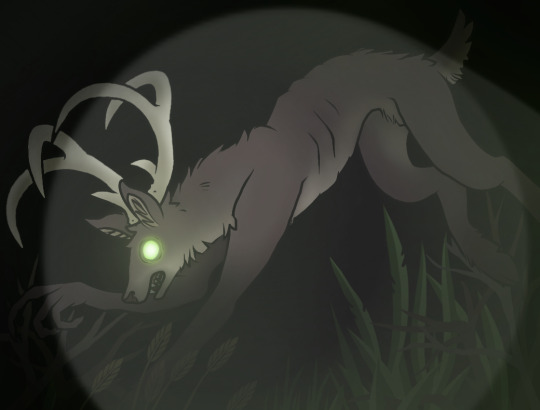
The Wendigo is a supernatural, cannibalistic monster from Algonquian folklore. It is a spirit of winter that represents the dangers of selfishness and greed. Wendigo legends are cautionary tales about the importance of community and the consequences of isolation.
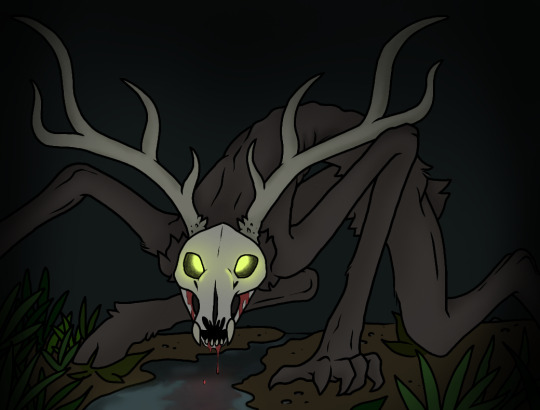
#wendigo#windigo#forest creature#mythic creature#mythical creatures#creature#nativeamericans#native american#folklore#cannibalistic#deer#deers#creepy#kinda scared ngl#algonquian#luna wolfewolf#lunawolfewolf
30 notes
·
View notes